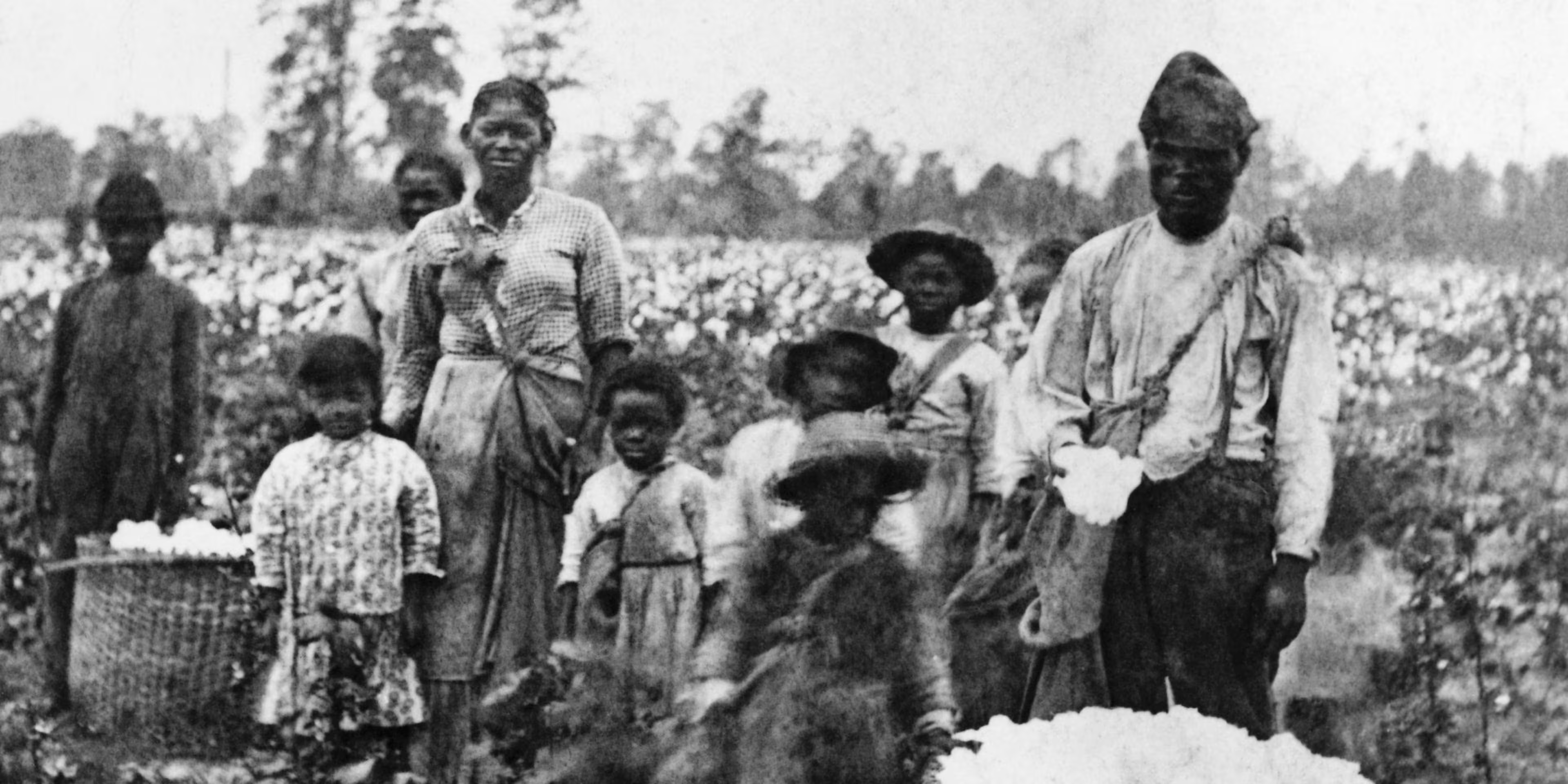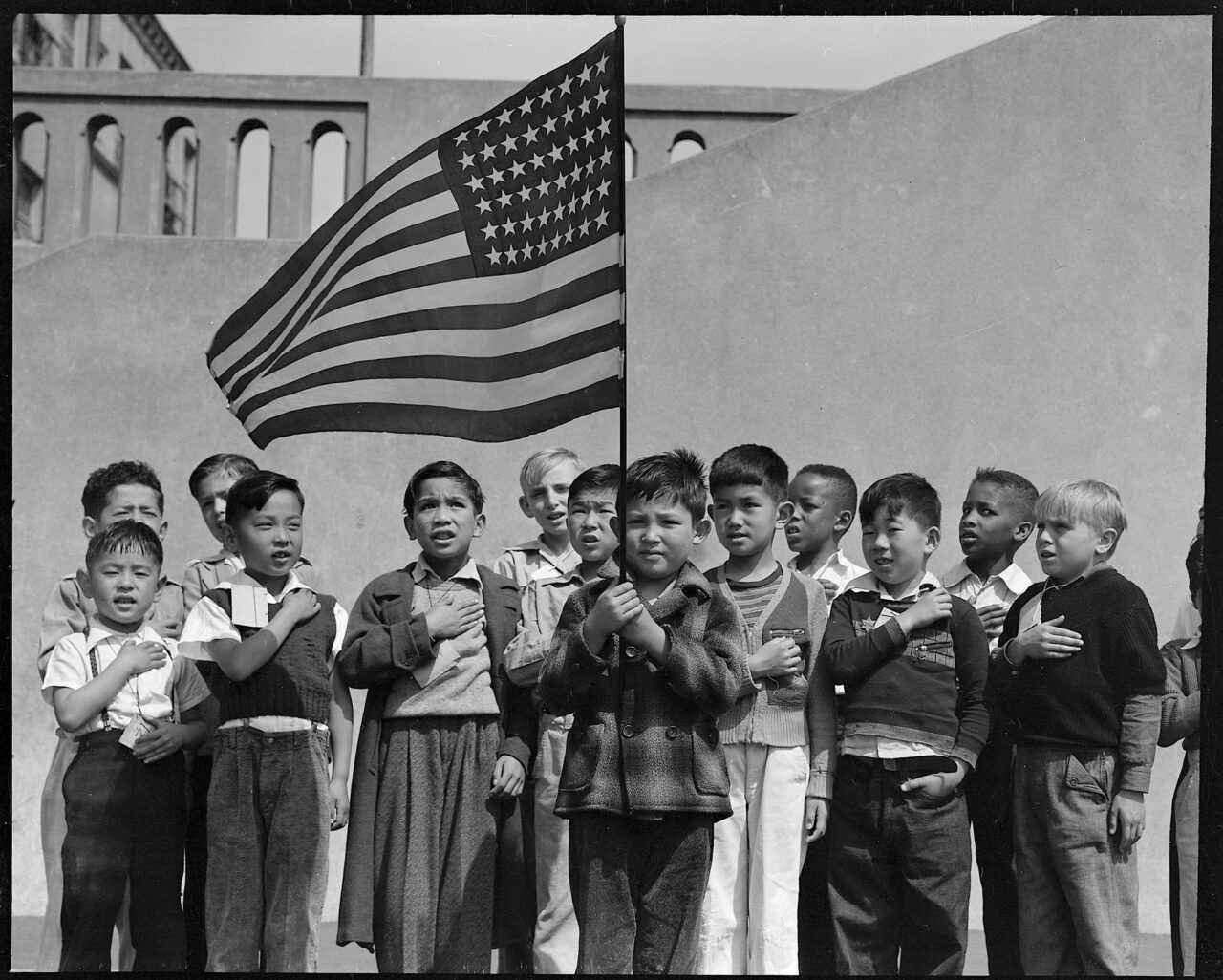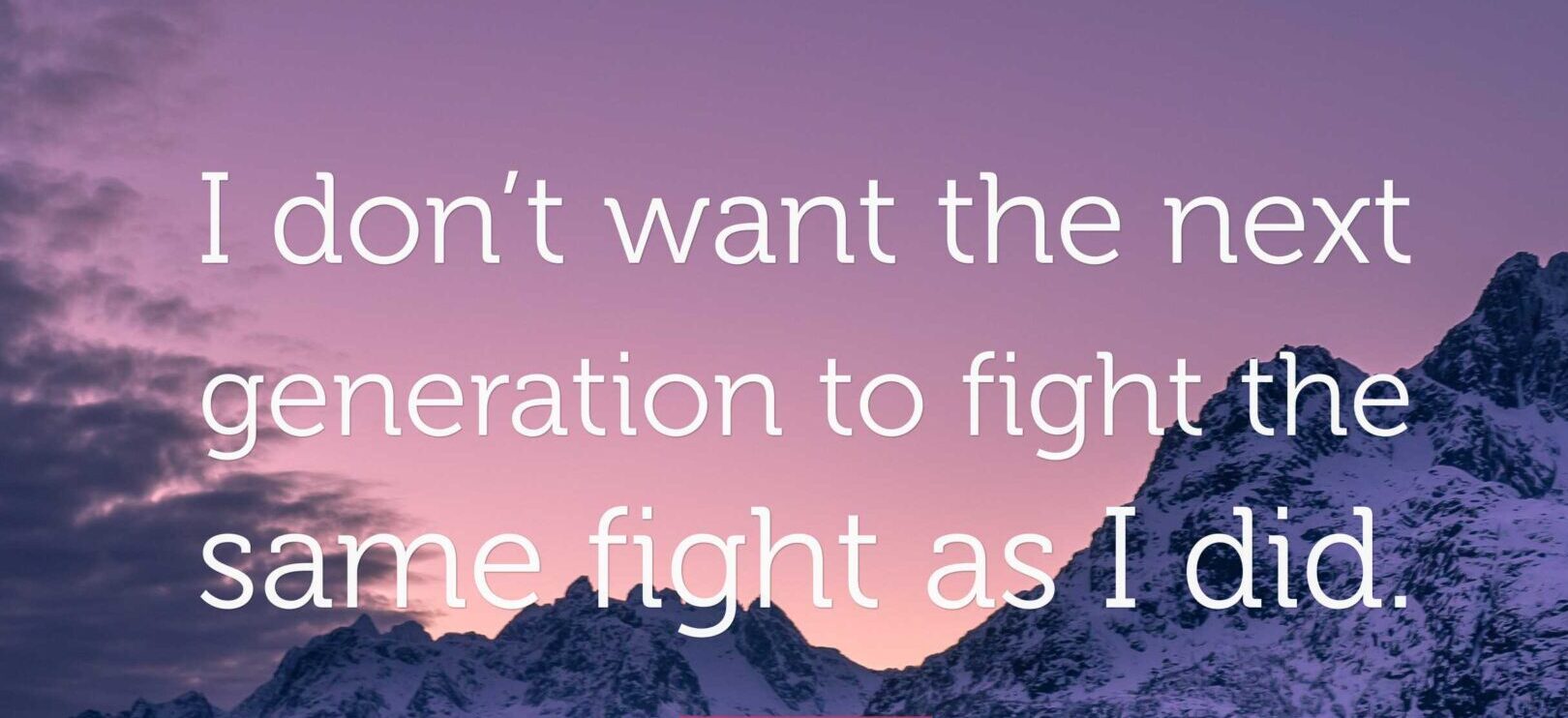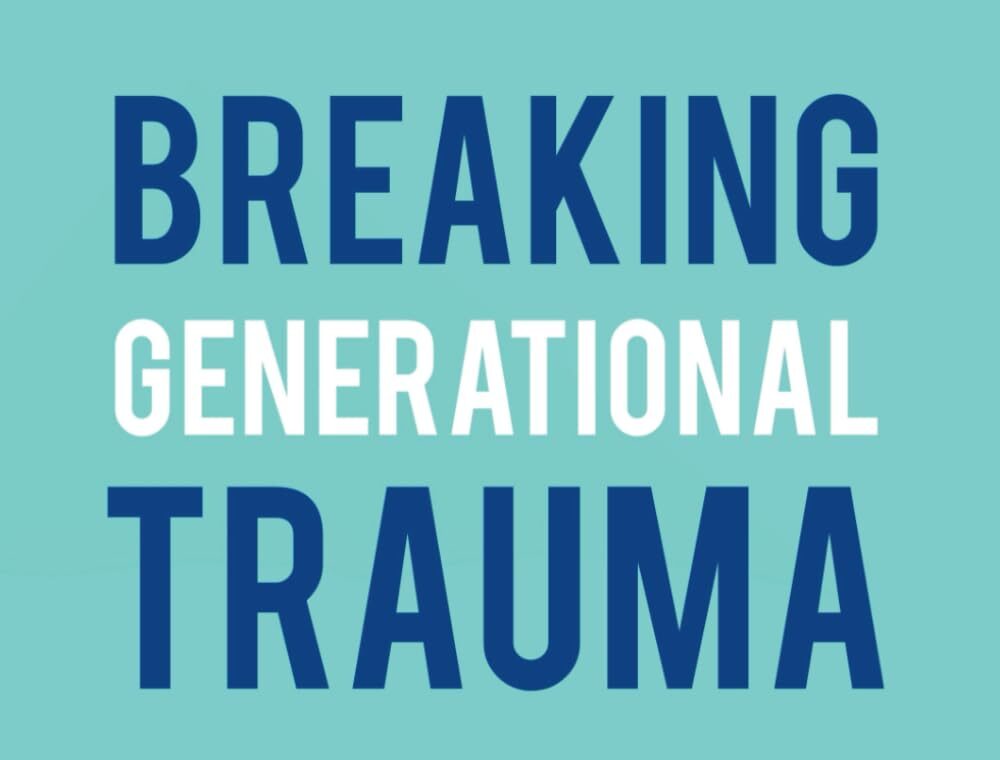This Didn’t Start With You—But You’re the One in Therapy Now
What happens when the ghosts you inherit show up in your nervous system—and how to break the cycle without breaking down.
The kind of pain that doesn’t start with you but somehow lives in you, waking you up at 3 a.m., tightening your chest when nothing’s wrong, making you flinch at things you can’t name. And no, it’s not just because your grandma was strict. It’s because some part of your family history involved people who were hurt, erased, enslaved, displaced, or dehumanized—and no one ever talked about it, so the story got buried alive in your nervous system.
“History isn’t what happened. It’s what we remember,” Heather Cox Richardson once wrote1. And America has remembered things… selectively.
Take American plantations. Literal torture farms where people were bought, sold, whipped, raped, and worked to death—and now, you can book one for your dream wedding. You can sip champagne on the same veranda where families were torn apart and babies were taken from their mothers. And if you’re wondering if that’s a little… off, yeah. It’s not just off. It’s how history forgets on purpose.
Before the Civil War, enslaved Black people made up nearly 40% of the Southern population2. Children born into slavery had a coin-toss chance of dying before age five3. In fact, enslaved people were so economically valuable that, by 1860, the total dollar value of the slave population was more than all of America’s banks, railroads, and manufacturing combined4. This wasn’t just racism. It was a business model.

And it didn’t stop there. Ancient Rome built entire industries on the backs of enslaved people, sending them to die in silver mines, or to fight each other to the death in coliseums while rich people snacked on olives. There were two to three million slaves in Italy alone at the peak of the Roman Empire5. Gladiators? About 20% died in the arena6. But now the Colosseum is a selfie destination and a pizza stand. The murder is forgotten. The architecture gets five stars.
The British colonized 23% of the world’s population and caused multiple famines, including the Bengal famine of 1943, which killed up to 3 million people7. Churchill, by the way, refused to redirect food shipments during the famine and blamed Indians for “breeding like rabbits”8. Today, those colonial estates are Instagram-worthy vacation spots, full of tea sets and antique books. The death toll didn’t make the brochure.
Belgium had a population of 20 million in the Congo before King Leopold’s rubber empire. By the time he was done, it had dropped to 10 million9. And yet, statues of him still stand in Brussels. No one mentions the mass amputations. No one talks about how children were mutilated for not meeting rubber quotas10. It’s not part of the walking tour.
Now, let’s take a breather with Groucho Marx, who once said, “I’ve had a perfectly wonderful evening. But this wasn’t it.” That’s sort of how it feels reading history textbooks in retrospect.
Back in the U.S., we threw over 120,000 Japanese Americans into camps during World War II, most of them born in this country11. They lost their homes, their businesses, and years of their lives. We called it internment, like it was some kind of internship. When they got out, they got no apology, no reparations, and definitely no return of property. It took until 1988 for the U.S. government to formally say, “Yeah, we messed up”12.

Even the California missions—those little adobe buildings you learn about in fourth grade—were built on the bodies of Native people who were forced to convert, forced to labor, and often died in captivity. In some missions, 90% of the Native population died13. That’s not a typo. That’s what happens when you rewrite history as a fairy tale.
And all of this, all of this selective memory, feeds into the trauma. Because when your history is denied, or ignored, or turned into a gift shop, you grow up thinking your pain is imaginary. Or worse, that it’s your fault.
But it’s not. It’s chemical. It’s physical. Studies on Holocaust survivors’ children show they have altered levels of cortisol, the hormone that regulates stress14. Similar patterns show up in descendants of American slaves, Native communities, and families of refugees15. Intergenerational trauma has been linked to depression, anxiety, PTSD, substance abuse, autoimmune disorders, and even premature birth16. African Americans today have higher rates of PTSD, depression, and hypertension than white Americans17. Native American youth have the highest suicide rates of any racial group in the U.S.18. It’s not just in your head. It’s in your blood.
As Oprah said, “You don’t become what you want. You become what you believe”19. And what if what you believe is shaped by the pain of people who came before you—people who never got to believe they mattered?
And still, somehow, we’re expected to move on.
So, here’s the shift: you can’t erase what happened. But you can face it. And when you do, you start healing not just yourself, but the whole chain of people behind you who never got the chance.
I bake cookies. I have snacks. I don’t ask anyone to bring anything but themselves. And when someone walks into my space, I know I don’t know their entire history. I don’t know if their great-grandfather fled genocide or if their mom survived boarding school or if they grew up thinking silence was the only way to stay safe. But I can listen. I can be curious. I can believe them. And that might be the start of something real.

General Stanley McChrystal once said, “Leaders can let you fail and yet not let you be a failure”20. What if we treated each other that way? What if we were a little more willing to offer space, instead of shame?
And look, before someone says it—yes, there are people who use this stuff as an excuse. Some folks treat the word “trauma” like it’s a hall pass. They act out, they hurt people, they avoid responsibility, and they wrap it all up in psychological language. That doesn’t mean trauma isn’t real. That means they’re misusing it. People lie about physical pain, too—that doesn’t mean we cancel medicine.
There are also times when bad behavior is just bad behavior. Just because your great-grandmother suffered doesn’t mean you get to ghost your friends or scream at your coworkers. Knowing your history should help you understand your patterns, not excuse them. Understanding trauma gives us tools—it doesn’t give us permission to be reckless with other people.
And yeah, some people are afraid that all this talk about history and oppression just keeps us stuck in the past. But healing doesn’t mean ignoring the past. It means refusing to let its own you. It means telling the truth so you can finally break the cycle.
Because trauma may be inherited, but so is resilience.
We can’t expect therapists to know the whole story of what happened to our ancestors. That’s not their fault. But we can help them understand how deep it goes. We can show up with our stories. With our ghosts. With our humor, and our grief, and yes—with cookies.
Because healing doesn’t always look like a breakthrough. Sometimes it looks like a snack table. Sometimes it looks like making space for someone who doesn’t have the words yet. Sometimes it looks like saying, “I don’t need you to explain. I’m just glad you’re here.”
That’s the work. That’s the invitation.
And maybe, if we do it right, the next generation won’t have to carry quite so much.

Footnotes:
- Richardson, Heather Cox. Letters from an American. Substack, 2020–2024. ↩
- Berlin, Ira. Generations of Captivity: A History of African-American Slaves. Harvard University Press, 2003, p. 117. ↩
- Haines, Michael R. “Estimated Life Expectancy at Birth, 1850–2000.” Historical Statistics of the United States, Cambridge University Press, 2006. ↩
- Baptist, Edward E. The Half Has Never Been Told: Slavery and the Making of American Capitalism. Basic Books, 2014, p. 380. ↩
- Bradley, Keith. Slavery and Society at Rome. Cambridge University Press, 1994, p. 15. ↩
- Wiedemann, Thomas. Emperors and Gladiators. Routledge, 1992, p. 105. ↩
- Tharoor, Shashi. Inglorious Empire: What the British Did to India. Hurst Publishers, 2017, p. 133. ↩
- Mukerjee, Madhusree. Churchill’s Secret War: The British Empire and the Ravaging of India during World War II. Basic Books, 2010, pp. 112–130. ↩
- Hochschild, Adam. King Leopold’s Ghost: A Story of Greed, Terror, and Heroism in Colonial Africa. Houghton Mifflin, 1998, p. 233. ↩
- Nzongola-Ntalaja, Georges. “The Congo: From Leopold to Kabila.” Zed Books, 2002, p. 30. ↩
- Daniels, Roger. Prisoners Without Trial: Japanese Americans in World War II. Hill and Wang, 2004, p. 50. ↩
- Commission on Wartime Relocation and Internment of Civilians. Personal Justice Denied. U.S. Government Printing Office, 1982. ↩
- Hackel, Steven W. Children of Coyote, Missionaries of Saint Francis: Indian-Spanish Relations in Colonial California. University of North Carolina Press, 2005, pp. 196–201. ↩
- Yehuda, Rachel et al. “Transgenerational effects of trauma: Epigenetic mechanisms in humans.” Nature Reviews Neuroscience, vol. 19, 2018, pp. 103–117. ↩
- Comas-Díaz, Lillian et al. “Racial Trauma: Theory, Research, and Healing.” American Psychologist, vol. 73, no. 3, 2018, pp. 181–193. ↩
- Serpeloni, Fabiana et al. “Long-lasting effects of war trauma on epigenetic profiles in children and their parents.” Nature Communications, vol. 11, no. 1, 2020. ↩
- Carter, Robert T. et al. “Racism and Psychological and Emotional Injury.” The Counseling Psychologist, vol. 35, no. 1, 2007, pp. 13–105. ↩
- Leavitt, R. A., et al. “Suicide Among American Indian and Alaska Native People.” American Journal of Public Health, vol. 108, no. 5, 2018, pp. 603–607. ↩
- Winfrey, Oprah. What I Know For Sure. Flatiron Books, 2014. ↩
- McChrystal, Stanley. Leaders: Myth and Reality. Portfolio, 2018. ↩




